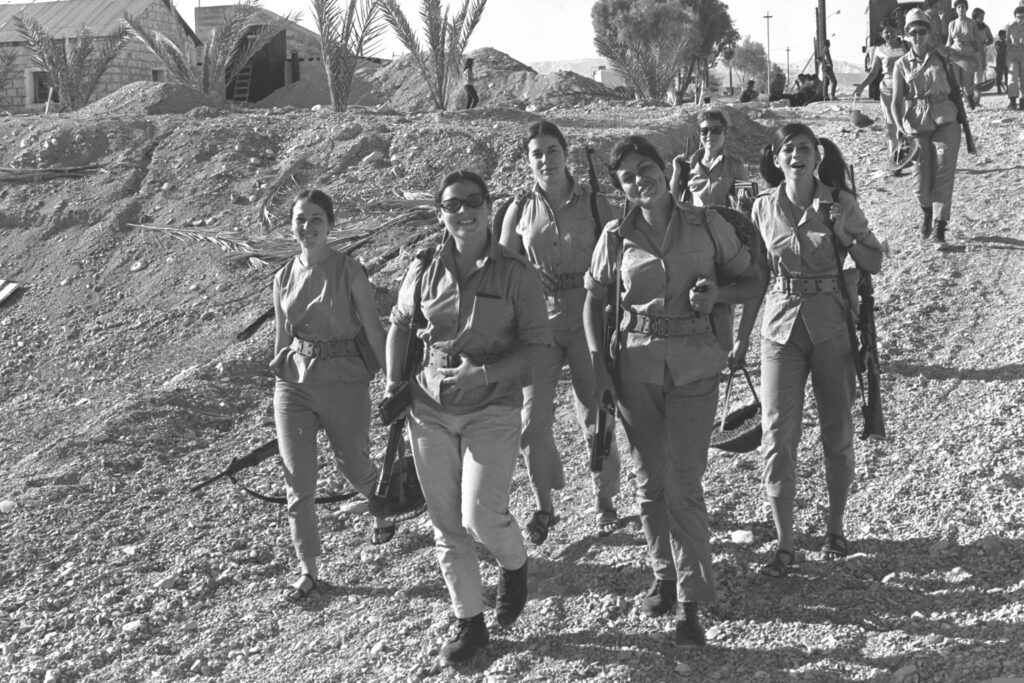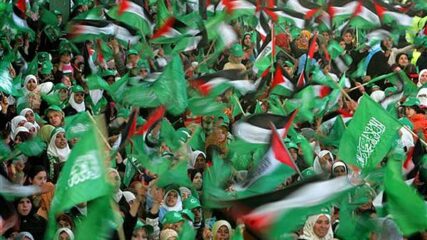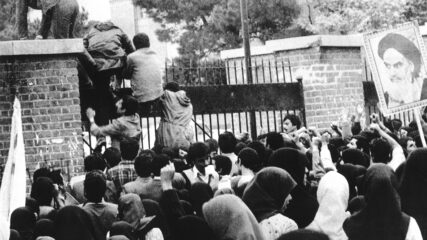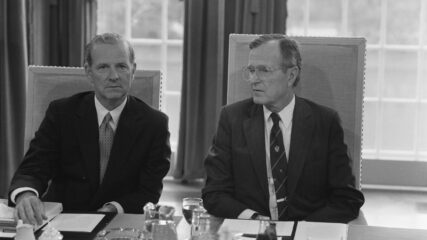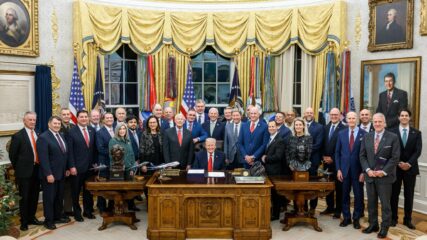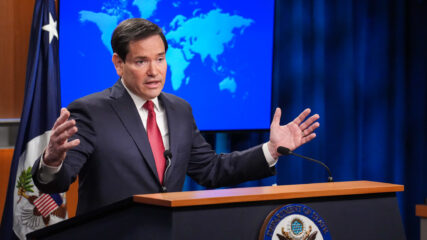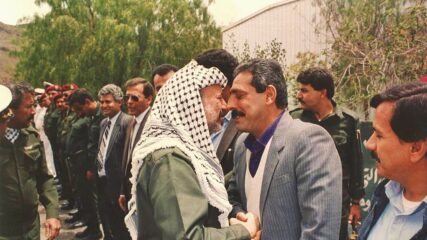April 2025
CIE has compiled the following list of books and articles to guide understanding of women in Israel.
Books
Abdo-Zubi, Nahla, and Ronit Lenṭin. Women and the Politics of Military Confrontation: Palestinian and Israeli Gendered Narratives of Dislocation. New York: Berghahn Books, 2002.
Abdo-Zubi, Nahla. Women in Israel: Race, Gender and Citizenship. New York: Zed Books, 2011.
Atkinson, Linda. In Kindling Flame: The Story of Hannah Senesh, 1921-1944. New York: Beech Tree Books, 1992.
Azmon, Yael (ed.). Will You Listen to My Voice — Representation of Women in Israeli Culture. Tel Aviv: Van Leer Jerusalem Institute and Hakibbutz Hameuchad Publishing House (Hebrew), 2001.
Atiya, Nayra. Zikrayat: Eight Jewish Women Remember Egypt. Cairo: The American University in Cairo Press, 2020.
Azmon, Yael, and Dafna N. Izraeli. Women in Israel. Volume 6, Studies of Israeli Society. New Brunswick, NJ: Transaction Publishers, 1993.
Baskin, Judith R. Jewish Women in Historical Perspective. Detroit: Wayne State University Press, 1998.
Ben-Zvi, Rachel Yanait. Before Golda: Manya Shochat: A Biography. Biblio Press, 1989.
Bernstein, Deborah. Pioneers and Homemakers: Jewish Women in Pre-State Israel. Albany: State University of New York, 1992.
Bernstein, Deborah. The Struggle for Equality: Urban Women Workers in Pre-State Israeli Society. New York: Praeger, 1987.
Chazan, Meir. Jewish Women and the Defense of Palestine: The Modest Revolution, 1907-1945. Albany: State University of New York Press, 2022.
Diament, Carol, and Lily Rattok. Ribcage: Israeli Women’s Fiction. New York: Department of Jewish Education, Hadassah, 1994.
Frankel, Jonathan. Jews and Gender: The Challenge to Hierarchy. Oxford: Oxford University Press, 2001.
Feinberg, Miriam P., and Miriam Klein Shapiro. Hear Her Voice! Twelve Jewish Women Who Changed the World. Cedarhurst, NY: Pitspopany Press, 2006.
Feldman, Yael S. No Room of Their Own: Gender and Nation in Israeli Women’s Fiction. New York: Columbia University Press, 1999.
Fuchs, Esther (ed.). Israeli Feminist Scholarship: Gender, Zionism, and Difference. Austin: University of Texas, 2014.
Fuchs, Esther. Israeli Women’s Studies: A Reader. New Brunswick, NJ: Rutgers University Press, 2005.
Gidal, Nachum Tim. Henrietta Szold. Jerusalem: Gefen Publishing House, 1997.
Greenspahn, Frederick E. Women and Judaism: New Insights and Scholarship. New York: New York University Press, 2009.
Halperin-Kaddari, Ruth. Women in Israel: A State of Their Own. Philadelphia: University of Pennsylvania Press, 2004.
Harris, Rachel Sylvia. Warriors, Witches, Whores: Women in Israeli Cinema. Detroit: Wayne State University Press, 2017.
Hay, Peter. Ordinary Heroes: The Life and Death of Chana Szenes, Israel’s National Heroine. New York: Paragon House, 1989.
Herzog, Hanna. Gendering Politics: Women in Israel. Ann Arbor: University of Michigan Press, 1999.
Jacoby, Tami Amanda. Women in Zones of Conflict: Power and Resistance in Israel. Montréal: McGill-Queen’s University Press, 2005.
Kandiyoti, Deniz (ed.). Gendering the Middle East: Emerging Perspective. London: I.B. Tauris, 1996.
Kark, Ruth, Margalit Shilo, and Galit Hasan-Rokem. Jewish Women in Pre-State Israel: Life History, Politics, and Culture. Waltham, MA: Brandeis University Press, 2008.
Katz, Sheila H. Women and Gender in Early Jewish and Palestinian Nationalism. Gainesville: University Press of Florida, 2003.
Kraus, Vered. Secondary Breadwinners: Israeli Women in the Labor Force. Westport, CT: Praeger, 2002.
Levin, Marlin. It Takes a Dream … The Story of Hadassah. Jerusalem: Gefen Publishing House, 1997.
Lomsky-Feder, Edna, and Eyal Ben-Ari. The Military and Militarism in Israeli Society. Albany: State University of New York Press, 1999.
Lomsky-Feder, Edna, and Orna Sasson-Levy. Women Soldiers and Citizenship in Israel: Gendered Encounters With the State. Oxon: Routledge, 2018.
Meir, Golda. My Life. New York: G.P. Putnam’s Sons, 1975.
Mora, Miriam Eve. Carrying a Big Schtick: Jewish Acculturation and Masculinity in the Twentieth Century. Detroit: Wayne State University Press, 2024.
Musher, Sharon Ann. Promised Lands: Hadassah Kaplan and the Legacy of American Jewish Women in Early Twentieth-Century Palestine. New York: New York University Press, 2025.
Rachel. Flowers of Perhaps. Translated by Robert Friend with Shimon Sandbank. New Milford, CT: Toby Press, 2008.
Raday, Fransis, Carmel Shalev, and Michal Liban-Kooby (eds.). Women’s Status in Israeli Law and Society. Jerusalem and Tel Aviv: Schocken Publishing House (Hebrew), 1995.
Raider, Mark A., and Miriam B. Raider-Roth (eds.). The Plough Woman: Records of the Pioneer Women of Palestine. Hanover: University Press of New England, 2002.
Reinharz, Shulamit, and Mark A. Raider. American Jewish Women and the Zionist Enterprise. Waltham, MA: Brandeis University Press, 2005.
Senesh, Hannah. Hannah Senesh: Her Life and Diary. Woodstock, VT: Jewish Lights, 2004.
Sharoni, Simona. Gender and the Israeli-Palestinian Conflict: The Politics of Women’s Resistance. Syracuse, NY: Syracuse University Press, 1995.
Shilo, Margalit. Girls of Liberty: The Struggle for Suffrage in Mandatory Palestine. Waltham, MA: Brandeis University Press, 2016.
Simmons, Erica B. Hadassah and the Zionist Project. Lanham: Rowman & Littlefield Publishers, 2006.
Swarts, Lynne M. Gender, Orientalism and the Jewish Nation at the German Fin de Siècle: Women in the Art of Ephraim Moses Lilien. New York: 2020.
Swirski, Barbara, and Marilyn Safir. Calling the Equality Bluff: Women in Israel. New York: Pergamon Press, 1991.
Watzman, Haim, and Tamar El Or. Next Year I Will Know More: Literacy and Identity Among Young Orthodox Women in Israel. Detroit: Wayne State University Press, 2002.
Zakai, Orian. Fictions of Gender: Women, Femininity, and the Zionist Imagination. Montreal: McGill-Queen’s University Press, 2023.
Articles
Baumel, Judith Tydor, “‘Teacher, Tiller, Soldier, Spy’? Women’s Representations in Israeli Military Memorials,” in Hannah Naveh (ed.), Gender and Israeli Society: Women’s Time, Tel Aviv, Vallentine Mitchell (2003): 93-118.
Ben-Porath, Yoram, and Reuben Gronau, “Jewish Mother Goes to Work: Trends in the Labor Force Participation of Women in Israel, 1955-1980,” Journal of Labor Economics 3, No. 1 (1985): 310-327.
Berg, Gerald M., “Zionism’s Gender: Hannah Meisel and the Founding of the Agricultural Schools for Young Women,” Israel Studies 6, No. 3 (Fall 2001): 135-165.
Berkovitch, Nitza, “Motherhood as a National Mission: The Construction of Womanhood in the Legal Discourse in Israel,” Women’s Studies International Forum 20, Nos. 5-6 (1997): 605-619.
Bernstein, Deborah, and Hannah Ashley, “The Soul of a New Yishuv: Pioneers and Homemakers: Jewish Women in Pre-State Israel,” Bridges 5, No. 2 (Winter 1995): 94-100.
Bernstein, Deborah, “The Plough-Women Who Cried Into the Pots: The Positions of Women in the Labor Force in Pre-State Israeli Society,” Jewish Social Studies 45, No. 1 (1983): 43-56.
Biale, David, “Zionism as Erotic Revolution,” in Eros and the Jews: From Biblical Israel to Contemporary America, University of California Press (1997): 176-203.
Birnbaum, Paula J., “Modern Orthodox Feminism: Art, Jewish Law, and the Quest for Equality,” in Frederick E. Greenspahn (ed.), Contemporary Israel: New Insights and Scholarship, New York, New York University Press (2016): 131-165.
Boumel, J.T., “The Heroism of Hannah Senesz: An Exercise in Creating Collective National Memory in the State of Israel,” Journal of Contemporary History 31, No. 3 (1996): 521-546.
Brush, Candida, Robert Hisrich, and Miri Lerner, “Israeli Women Entrepreneurs: An Examination of Factors Affecting Performance,” Journal of Business Venturing 12, No. 4 (1997): 315-339.
Butler, Judith, “Parting Ways: Jewishness and the Critique of Zionism,” in Michael Marmur and David Ellenson (eds.), American Jewish Thought Since 1934: Writings on Identity, Engagement, and Belief, Brandeis University Press (2020): 190-191.
Chazan, Meir, “The Struggle of Kibbutz Women to Participate in Guard Duties During the Arab Revolt, 1936-1939,” Journal of Israeli History: Politics, Society, Culture 31, No. 1 (2012): 83-108.
Chazan, Naomi, “Israel at 70: A Gender Perspective,” Israel Studies 23, No. 3 (2018): 141-151.
Chesler, Phyllis, and Rivka Haut, “The Fight Against Being Silenced,” 115-133, and “The Politics of Women of the Wall,” 180-204, in Women of the Wall: Claiming Sacred Ground at Judaism’s Holy Site, Jewish Lights (2002).
Cicurel, Inbal, and Rachel Sharaby, “Women in the Menstruation Huts: Variations in Preserving Purification Customs Among Ethiopian Immigrants,” Journal of Feminist Studies in Religion 23, No. 2 (2007): 69-84.
Dahan-Kalev, Henriette, “Mizrahi Feminism: The Unheard Voice,” in Jewish Feminism in Israel: Some Contemporary Perspectives, University Press of New England (2003): 96-112.
Dajani, Souad, “Between National and Social Liberation: The Palestinian Women’s Movement in the Israeli Occupied West Bank and Gaza Strip,” in Tamar Mayer (ed.), Women and the Israeli Occupation: The Politics of Change, New York, Routledge (1994): 33-61.
Daoud, Nihaya, et al., “Intimate Partner Violence Prevalence, Recurrence, Types, and Risk Factors Among Arab and Jewish Immigrant and Nonimmigrant Women of Childbearing Age in Israel,” Journal of Interpersonal Violence (April 2017).
Daoud, Suheir Abu Oksa, “Women and Islamism in Israel,” Frontiers: A Journal of Women Studies 37, No. 3 (September 2016): 21-46.
El Or, Tamar, “Paradoxes and Social Boundaries: Ultraorthodox Jewish Women and Their World,” in Esther Fuchs (ed.), Israeli Women’s Studies: A Reader, New Brunswick, NJ, Rutgers University Press (2005).
Erdreich, L., “Strategies Against Patriarchy: Sexualized Political Activism of Palestinian Women on Campus,” Israel Studies 11, No. 1 (2006): 35-58.
Espanioly, Nabila, “Palestinian Women in Israel: Identity in Light of the Occupation,” in Tamar Mayer (ed.), Women and the Israeli Occupation: The Politics of Change, New York, Routledge (1994): 106-120.
Fenster, Tovi, “Ethnicity, Citizenship, Planning and Gender: The Case of Ethiopian Immigrant Women in Israel,” Gender, Place & Culture: A Journal of Feminist Geography 5, No. 2 (1998): 177-189.
Fogiel-Bijaoui, Sylvie, “Women in Israel: The Social Construction of Citizenship as a Non-Issue,” Israel Social Science Research 12, No. 1 (1997): 1-30.
Freedman, Marcia, “Theorizing Israeli Feminism 1970-2000,” in Jewish Feminism in Israel: Some Contemporary Perspectives, University Press of New England (2003): 1-16.
Geva, Sharon, “Case Closed: Women in the Israel Police, 1948-1958,” Israel Studies 24, No. 1 (2019): 100-125.
Granek, Leeat, et al., “Women and Health in Israel,” The Lancet 389, No. 10088 (June 2017): 2575-2578.
Greenfield, Zvia, “Is It Really Benign? Gender Separation in Ultra-Orthodox Bus Lines,” Law and Ethics of Human Rights 1, No. 1 (2007): 237-270.
Hacker, Daphna, “Inter-Religious Marriages in Israel: Gendered Implications for Conversion, Children, and Citizenship,” Israel Studies 14, No. 2 (2009): 178-197.
Hassan, Manar, “Growing Up Female and Palestinian in Israel,” in Esther Fuchs (ed.), Israeli Women’s Studies: A Reader, New Brunswick, NJ, Rutgers University Press (2005): 181-189.
Hassan, Manar, “The Politics of Honor: Patriarchy, the State and the Murder of Women in the Name of Family Honor,” Israel Studies 21 (2006): 1-37.
Helman, Sara, and Tamar Rapoport, “Women in Black: Challenging Israel’s Gender and Socio-Political Orders,” British Journal of Sociology 48 (1997).
Herbst, Anat, “The Legitimacy of Single Mothers in Israel Examined Through Five Circles of Discourse,” Israel Studies Review 28, No. 2 (Winter 2013): 228-246.
Herzog, Hanna, “Are Women Really Equal in the People’s Army? A Gender Perspective on the Israel Defense Forces,” in Robert Egnell and Mayesha Alam (eds.), Women and Gender Perspectives in the Military: An International Comparison, Washington: Georgetown University Press (2019): 153-172.
Herzog, Hanna, “Homefront and Battlefront: The Status of Jewish and Palestinian Women in Israel,” Israel Studies 3, No. 1 (Spring 1998): 61-84.
Herzog, Hanna, “Why So Few? The Political Culture of Gender in Israel,” International Review of Women and Leadership 2 (1996): 1-18.
Herzog, Hanna, “Women in Israeli Society,” in Uzi Rebhun and Chaim Waxman (eds.), Jews in Israel: Contemporary Social and Cultural Patterns, Brandeis University Press (2003): 195-217.
Hollander, Aviad Yehiel, “Halachic Multiculturalism in the IDF: Rulings of Official Religious Authorities in Israel Concerning ‘Women’s Singing,’” Modern Judaism 34, No. 3 (2014): 271-286.
Israeli Foreign Ministry, “Women in Israel: Report on the Status of Women in Israel,” 2001.
Izraeli, Dafna N., “Gendering Military Service in Israeli Defense Forces,” Israel Social Science Research 12 (1997): 129-166.
Izraeli, Dafna N., “The Zionist Women’s Movement in Palestine, 1911-1927: A Sociological Analysis,” Signs: Journal of Women in Culture and Society 7, No. 1 (Autumn 1981): 87-114.
Izraeli, Dafna N., and E. Taborey, “The Political Context of Feminist Attitudes in Israel,” Gender and Society 2, No. 4 (1988): 463-481.
Jabareen, Yosef, “Reducing Poverty Among Arab and Muslim Women: The Case of Arab Women in Israel,” Journal of International Women’s Studies 16, No. 3 (2015): 117-136.
Jacoby, Tami Amanda, “Gender Relations and National Security in Israel,” in Tami Amanda Jacoby and Brent E. Sasley (eds.), Redefining Security in the Middle East, Manchester: Manchester University Press (2002): 83-104.
Kahn, Susan Martha, “‘The Time Arrived but the Father Didn’t’: A New Continuum of Israeli Conception,” in Reproducing Jews, Durham, Duke University Press (2000), 9-53.
Kaplan, S., and C. Rosen, “Ethiopian Immigrants in Israel: Between Preservation of Culture and Invention of Tradition,” Jewish Journal of Sociology 35, No. 1 (1993): 35-48.
Klorman, Bat-Zion Eraqi, “Women Resisting Men: Inheritance and Disinheritance in the Yemenite Jewish Community in Mandatory Palestine,” Nashim: A Journal of Jewish Women’s Studies & Gender Issues 11 (Spring 2006): 126-141.
Kulik, Liat, “Explaining Employment Hardiness Among Women in Israel’s Ultraorthodox Community,” Journal of Career Assessment 24, No. 1 (February 2016): 67-85.
Kuntsman, Adi, “Double Homecoming: Sexuality, Ethnicity and Place in Immigration Stories of Russian Lesbians in Israel,” Women’s Studies International Forum 26, No. 4 (2003): 299-311.
Lahav, Hagar, “Jewish Secular-Believer Women in Israel: A Complex and Ambivalent Identity,” Israel Studies Review 32, No. 2 (Winter 2017): 66-88.
Lahav, Pnina, “‘A Great Episode in the History of Jewish Womanhood’: Golda Meir, the Women Workers’ Council, Pioneer Women, and the Struggle for Gender Equality,” Israel Studies 23, No. 1 (2018): 1-25.
Lahav, Pnina, “The Status of Women in Israel — Myth and Reality,” The American Journal of Comparative Law 22, No. 1 (Winter 1974): 108.
Lemish, Dafna, “The Whore and the Other: Israeli Images of Female Immigrants From the Former USSR,” Gender and Society 14 (2000): 333-349.
Levy, Y., “The Clash Between Feminism and Religion in the Israeli Military: A Multilayered Analysis.” Social Politics 17, No. 2 (2010): 185-209.
Mayer, Tamar, “From Zero to Hero: Masculinity in Jewish Nationalism,” in Esther Fuchs (ed.), Israeli Women’s Studies: A Reader, New Brunswick, NJ, Rutgers University Press (2005): 97-120.
Mayer, Tamar, “Heightened Palestinian Nationalism: Military Occupation, Repression, Difference and Gender,” in Tamar Mayer (ed.), Women and the Israeli Occupation: The Politics of Change, New York, Routledge (1994): 62-87.
McCune, Mary, “The Whole Wide World Without Limits,” in Jonathan Sarna (ed.), International Relief, Gender Politics, and American Jewish Women, American Jewish Civilization Series, Detroit, Wayne State University Press (2005).
Meler, Tal, “Palestinian Women Citizens of Israel Working in Agriculture: A Retrospective Concerning Ibtisam Ibrahim’s 1993 Article ‘The Cucumber Pickers,’” Israel Studies 23, No. 2 (2018): 74-94.
Melman, Billie, “The Legend of Sarah: Gender Memory and National Identities (Israel, 1917-90),” Journal of Israeli History 21, Nos. 1-2 (Fall 2003): 55-92.
Mor, Zohar, et al., “Health Status, Behavior, and Care of Lesbian and Bisexual Women in Israel,” Journal of Sexual Medicine 12, No. 5 (May 2015): 1249-1256.
Or, Ofra, “Midlife Women in Second Partnerships Choosing Living Apart Together: An Israeli Case Study,” Israel Studies Review 28, No. 2 (2013): 41-60.
Ovadia, Moshe, “Maghrebi Jewish Women During the British Mandate (1918-1948) in Pre-State Israel,” Women in Judaism: A Multidisciplinary Journal 11, No. 1 (2014).
Reiter, Yitzhak, “Religious Feminism or Feminism Within Religion? The Women of the Wall and Al-Aqṣā Murābiṭāt,” in Irene Schneider and Nijmi Edres (eds.), Uses of the Past: Sharī’a and Gender in Legal Theory and Practice in Palestine and Israel, Wiesbaden, Harrassowitz Verlag (2018): 203-215.
Remennick, Larissa, “Women With a Russian Accent in Israel: On the Gender Aspect of Immigration,” European Journal of Women’s Studies 6 (1999): 441-461.
Rimalt, Noya, “From Law to Politics: The Path to Gender Equality,” Israel Studies 18, No. 3 (Fall 2013): 5-18.
Rosenberg-Friedman, Lilach, “The Complex Identity of Religious-Zionist Women in Pre-State Israel, 1921-1948,” Israel Studies 11, No. 3 (Fall 2006): 83-107.
Rosenberg-Friedman, Lilach, “The Nationalization of Motherhood and the Stretching of Its Boundaries: Shelihot Aliyah and Evacuees in Eretz Israel (Palestine) in the 1940s,” Women’s History Review 17, No. 5 (November 2008): 767-785.
Rosenberg-Friedman, Lilach, “The Religious Women Fighters in Israel’s War of Independence: A New Gender Perception or a Passing Episode?” Nashim: A Journal of Jewish Women’s Studies & Gender Issues 6 (Fall 2003): 119-147.
Rosenberg-Friedman, Lilach, “Religious-Zionism and Gender: 70 Years of Redefining the Identity of Women in the Military, Religious, and Public Spheres,” Israel Studies 23, No. 3 (2018): 152-163.
Rosenberg-Friedman, Lilach, “Traditional Revolution: The Marriage Debate in the Religious Kibbutz — A Comparative View,” Journal of Israeli History 31, No. 1 (March 2012): 109-128.
Sasson-Levy, Orna, “Contradictory Consequences of Mandatory Conscription: The Case of Women Secretaries in the Israeli Military,” Gender & Society 21, No. 4 (2007): 481-507.
Sasson-Levy, Orna, “Gender Performance in a Changing Military: Women Soldiers in Masculine Roles,” in Esther Fuchs (ed.), Israeli Women’s Studies: A Reader, New Brunswick, NJ, Rutgers University Press (2005): 265-278.
Segev, Zohar, “From Philanthropy to Shaping a State: Hadassah and Ben-Gurion, 1937-1947,” Israel Studies 18, No. 3 (Fall 2013): 133-157.
Sered, Susan Starr, “The Militarized Body,” in What Makes Women Sick? Maternity, Modesty and Militarism in Israeli Society. Brandeis University Press, 2000.
Shakdiel, Leah, “Women of the Wall: Radical Feminism as an Opportunity for a New Discourse in Israel,” Journal of Israeli History 21, Nos. 1-2 (2002): 126-163.
Shapira, Assaf, et al., “The Representation of Women in Israeli Politics,” Israel Democracy Institute (2016).
Sharoni, Simona, “Homefront as Battlefield: Gender, Military Occupation and Violence Against Women,” in Tamar Mayer (ed.), Women and the Israeli Occupation: The Politics of Change, London, Routledge (1994).
Shilo, Margalit, “The Double or Multiple Image of the New Hebrew Woman,” Nashim: A Journal of Jewish Women’s Studies & Gender Issues 1 (1998): 73-94.
Shilo, Margalit, “Professional Women in the Yishuv in Mandatory Palestine: Shaping a New Society and a New Hebrew Woman,” Nashim: A Journal of Jewish Women’s Studies & Gender Issues 34 (Spring 2019): 33-52.
Singh, Maina Chawla, “‘Where Have You Brought Us, Sir?’ Gender, Displacement, and the Challenges of ‘Homecoming’ for Indian Jews in Dimona, 1950s-60s,” Shofar 32, No. 1 (2013): 1-26.
Stoler-Liss, Sachlav, “Mothers Birth the Nation: The Social Construction of Zionist Motherhood in Wartime Israeli Parents’ Manuals,” Nashim: A Journal of Jewish Women’s Studies & Gender Issues 6 (2003): 104-118.
Svirsky, Gila, “The Women’s Peace Movement in Israel,” in Kaplana Misra and Melanie S. Rich (eds.), Jewish Feminism in Israel: Some Contemporary Perspectives, University Press of New England (2003): 113-131.
Tadmor-Shimony, Tali, “Women Immigrant Teachers and State Formation in Israel 1948-1959,” Journal of Women’s History 26, No. 3 (2014): 81-104.
Teman, Elly, “The Medicalization of ‘Nature’ in the ‘Artificial Body’: Surrogate Motherhood in Israel,” Medical Anthropology Quarterly n.s., 17, No. 1 (2003): 78-98.
Triger, Zvi, “Golda Meir’s Reluctant Feminism: The Pre-State Years,” Israel Studies 19, No. 3 (Fall 2014): 108-133.
Tsamir, Hamutal, “Jewish-Israeli Poetry, Dahlia Ravikovitch, and the Gender of Representation,” Jewish Social Studies n.s., 14, No. 3 (Summer 2008): 85-125.
Vilmain, Vincent, “A Woman Within Zionism: The Path of Myriam Schach (1867-1956),” Nashim: A Journal of Jewish Women’s Studies & Gender Issues 16 (Fall 2008): 174-195.
Ward, May Alden, “The Influence of Women’s Clubs in New England and in the Middle Eastern States,” Annals of the American Academy of Political and Social Science 29 (1906): 7.
Wilf, Einat, “Anti-Feminism and Anti-Zionism,” Tablet, January 9, 2018.
Yakira, Elhanan, “Hannah Arendt, the Holocaust, and Zionism: A Story of a Failure,” Israel Studies 11, No. 3 (Fall 2006): 31-61.
Yishai, Yael, “Dilemmas in the Political Life of Israeli Women,” 1-26, and “Women’s Associations and Movements,” 57-90, in Between the Flag and the Banner: Women in Israeli Politics, Albany, State University of New York Press (1997).
Yuval-Davis, Nira, “The Bearers of the Collective: Women and Religious Legislation in Israel,” Feminist Review 4 (1980): 15-27.
Yosef, Dorit, “From Yekke to Zionist: Narrative Strategies in Life Stories of Central European Jewish Women Immigrants to Mandate Palestine,” Journal of Israeli History 33, No. 2 (2014): 185-208.
Zalcberg-Blak, Sima, “The Rush to Modesty,” Eretz Acheret: About Israel and Judaism 51 (2009): 30-42.
Zion-Waldoks, Tanya, “Mind the Gap: The Cost of Overlooking Gender in the Jewish Nation-State Question,” in Simon Rabinovitch (ed.), Defining Israel: The Jewish State, Democracy, and the Law, Cincinnati, Hebrew Union College Press (2018): 193-206.

